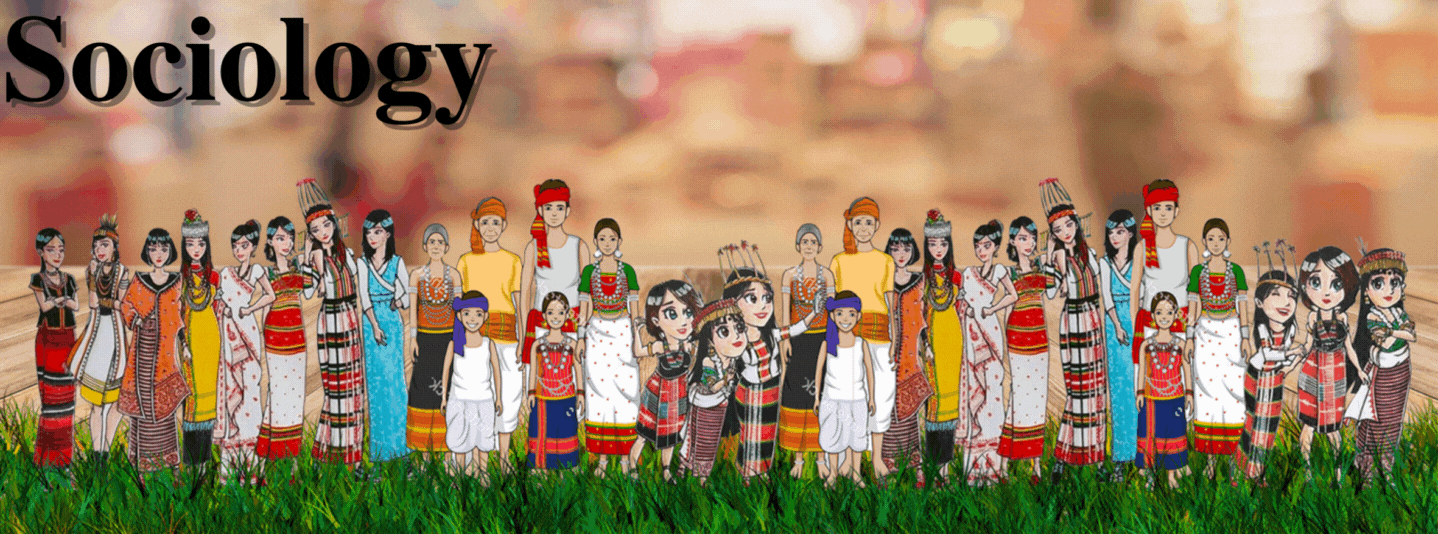Nature of Family
Introduction
The family is a fundamental social institution that serves as the cornerstone of human society. Universally recognized, it fulfills essential biological, emotional, and social functions. Its structure and roles have evolved across cultures and historical periods, yet its core purpose—providing support, socialization, and stability—remains consistent. This note explores the intrinsic nature of the family, emphasizing its universality, emotional foundations, structural characteristics, and societal significance. Drawing on sociological, psychological, and anthropological perspectives, the discussion highlights how the family shapes individuals and sustains social order.
1. Universality of the Family
The family is the most universal social institution, existing in every known human society. Anthropologist George Murdock (1949) asserted that the nuclear family—comprising parents and children—is a cultural universal, transcending geographical, religious, and historical boundaries. Even in societies with diverse kinship systems, such as polygamous or matrilineal structures, the family remains the primary unit for child-rearing and emotional bonding. This universality arises from its biological basis, addressing needs like reproduction, caregiving, and socialization (Murdock, 1949). No culture has survived without a form of family organization, underscoring its indispensable role in human survival and continuity.
2. Emotional and Biological Foundations
Families are rooted in emotional bonds driven by biological impulses such as mating, procreation, and parental care. Psychologist John Bowlby (1969) emphasized that the parent-child attachment formed in early life shapes emotional security and relational patterns in adulthood. The family acts as a sanctuary where love, trust, and intimacy are nurtured, fulfilling psychological needs. These emotional ties are reinforced by societal norms that prioritize familial loyalty, making the family a unique “haven in a heartless world” (Lasch, 1977).
3. Limited Size and Biological Constraints
Families are inherently limited in size due to biological and practical constraints. Unlike other social groups, family size is dictated by factors such as parental capacity to provide care, economic resources, and societal norms. For instance, the nuclear family typically includes 2–5 members, ensuring individualized attention to children’s needs. Anthropologist Robin Fox (1967) noted that while extended families may include more members, biological limitations like gestation periods and parental investment inherently restrict unchecked expansion.
4. Formative Influence on Personality
The family exerts profound formative influence on individuals, particularly during childhood. Socialization within the family shapes values, behaviors, and identity. Urie Bronfenbrenner’s ecological systems theory (1979) posits that the family (microsystem) is the most immediate environment affecting a child’s development. Studies show that children often replicate familial communication styles, conflict-resolution strategies, and belief systems in adulthood (Bandura, 1977). For example, children raised in nurturing environments tend to exhibit higher emotional intelligence and resilience.
5. Nuclear Position in Social Structure
Families form the nucleus of broader social systems. Sociologist Talcott Parsons (1955) argued that the family serves two critical functions: primary socialization (instilling cultural norms) and personality stabilization (providing emotional support to adults). As the “building block of society,” families establish kinship networks, economic cooperation, and intergenerational continuity. Disruptions in family structures, such as divorce or bereavement, often ripple through communities, highlighting their centrality (Cherlin, 2004).
6. Responsibility and Socialization
Families instill social responsibility and cooperation in members. Sociologist Robert MacIver (1937) observed that individuals labor tirelessly for their families, reflecting their lifelong commitment to collective welfare. Children learn reciprocity, empathy, and duty through shared responsibilities like caregiving or household chores. This socialization process prepares them for civic participation, as familial cooperation mirrors societal interdependence (Durkheim, 1893).
7. Social and Legal Regulations
Families are governed by stringent social and legal norms. Marriage laws, inheritance rights, and child custody regulations reinforce familial stability. For instance, incest taboos and marriage eligibility criteria (e.g., age, consent) are nearly universal (Levi-Strauss, 1969). Legal frameworks, such as divorce proceedings, reflect societal efforts to balance individual autonomy with familial preservation. These regulations ensure that families remain resilient amid social change.
8. Permanence as an Institution
While individual families may dissolve, the family as an institution endures. Sociologist Ernest Burgess (1945) distinguished between the institutional family (rigid, duty-bound) and the companionship family (flexible, emotion-focused), noting that both adapt to societal needs. For example, the rise of single-parent or blended families reflects evolving norms, yet the institution persists by fulfilling core functions like caregiving and socialization (Coontz, 1992).
Conclusion
The family’s nature is defined by its universality, emotional depth, and structural adaptability. As a biological necessity and social construct, it molds individual identities and sustains societal cohesion. Despite cultural variations, its roles in socialization, emotional support, and kinship remain irreplaceable. Understanding the family’s multifaceted nature is crucial for addressing contemporary challenges, from gender roles to demographic shifts, ensuring its continued relevance in an ever-changing world.
References
Bandura, A. (1977). Social learning theory. Prentice Hall.
Bowlby, J. (1969). Attachment and loss: Vol. 1. Attachment. Basic Books.
Bronfenbrenner, U. (1979). The ecology of human development. Harvard University Press.
Burgess, E. W. (1945). The family in a changing society. American Journal of Sociology, 51(6), 445–452. https://doi.org/10.1086/219754
Cherlin, A. J. (2004). The deinstitutionalization of American marriage. Journal of Marriage and Family, 66(4), 848–861. https://doi.org/10.1111/j.0022-2445.2004.00058.x
Coontz, S. (1992). The way we never were: American families and the nostalgia trap. Basic Books.
Durkheim, É. (1893). The division of labor in society. Free Press.
Fox, R. (1967). Kinship and marriage: An anthropological perspective. Penguin Books.
Lasch, C. (1977). Haven in a heartless world: The family besieged. Basic Books.
Levi-Strauss, C. (1969). The elementary structures of kinship. Beacon Press.
MacIver, R. M. (1937). Society: A textbook of sociology. Farrar & Rinehart.
Murdock, G. P. (1949). Social structure. Macmillan.
Silapathar College. (2022). Nature of family. https://silapatharcollege.edu.in/online/attendence/classnotes/files/1653752098.pdf


Post a Comment